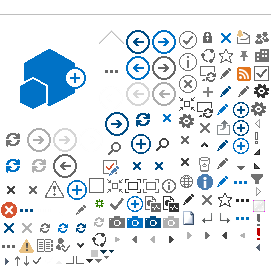Extreme weather events continue to present difficulties in the agricultural sector, and farmers are finding themselves in dire financial straits and at risk of losing their livelihood.
In total, the U.S. Department of Agriculture (USDA) issued more than $6 billion in crop insurance indemnities for the 2024 crop year. Nearly $1 billion of that was paid to agricultural producers impacted by hurricanes and tropical storms. In October 2024, $143 million in indemnities were paid for crop and forestry losses to Florida farmers due to Hurricane Milton alone.
With over 2 million farms in the U.S. and more than half the nation's land used for agricultural production, according to the Environmental Protection Agency, crop insurance is essential for farmers in all 50 states.
However, the impact of extreme weather events continues to present difficulties in the agricultural sector, with some farmers facing extreme heat, drought, flooding, tornadoes and hurricanes. As a result, farmers are finding themselves in dire financial straits and at risk of losing their livelihood.
“Extreme weather events over the past couple of years have been challenging for U.S. farmers and ranchers," says Dale Perry, divisional president, Great American Insurance Group—crop division. “Drought across much of the western U.S. over the past couple of years put stress on crop yields and pastureland. These growers and ranchers have needed the crop insurance indemnities to continue their farming operations."
In a recent example at Rascoe Pecan orchard in Texas, two years of drought following severe storms led to a major loss for the farming family due to a total crop failure. And while that is just one example, farmers across the country growing various crops continue to experience a similar fate.
“In the wake of extreme weather events like hurricanes Helene and Milton, it's more important than ever to have a comprehensive crop insurance plan in place," says Dave DeCapp, senior vice president, marketing, Farmers Mutual Hail Insurance. “Crop insurance is offered nationwide and protection is available for all eligible farmers."
Independent insurance agents can be a source of knowledge, reviewing crop insurance coverages to ensure their clients have the necessary coverage. “The agent is one of a farmer's most trusted advisers," Perry says. “Taking time to understand the farmers' risks and making sure they have adequate coverage is critical."
Today, “new agents continue to enter this space, supplying a sufficient sales force to support the farmers and ranchers looking to buy coverage," Perry explains.
Whether agents are offering a crop-hail policy, a multi-peril policy or a combination, crop insurance is a crucial risk management tool that helps protect farmers against unpredictable weather-related losses. With the knowledge that they have a financial safety net, farmers can put plans in place to continue operating in the short and long term.
However, “agents should review policies every year to ensure their insureds take advantage of new products and their coverage levels continue to allow them to feel financially confident in years with volatile markets," DeCapp says.
And while “it may be tempting for a farmer to reduce their crop insurance coverage given increased pressure on their margins, agents should work with their insureds to maintain a comprehensive plan. In years where farmers are struggling to break even, crop insurance could be critical in allowing them to farm into the next year."
Additionally, “not all farming operations are the same or have the same ability to absorb loss," Perry points out, and “adequate coverage could be the difference between farming another year or going out of business."
While farmers are increasingly aware of the importance of comprehensive risk management strategies, agents can also drive home the importance of technological developments and the opportunities such developments present.
“Outside of insurance products, technology in the industry is getting smarter and more accurate," DeCapp says. “Crop insurance carriers can use the GPS-powered precision ag data that farmers collect when planting and harvesting—this means more accurate coverage, which saves money for farmers."
Olivia Overman is IA content editor.
